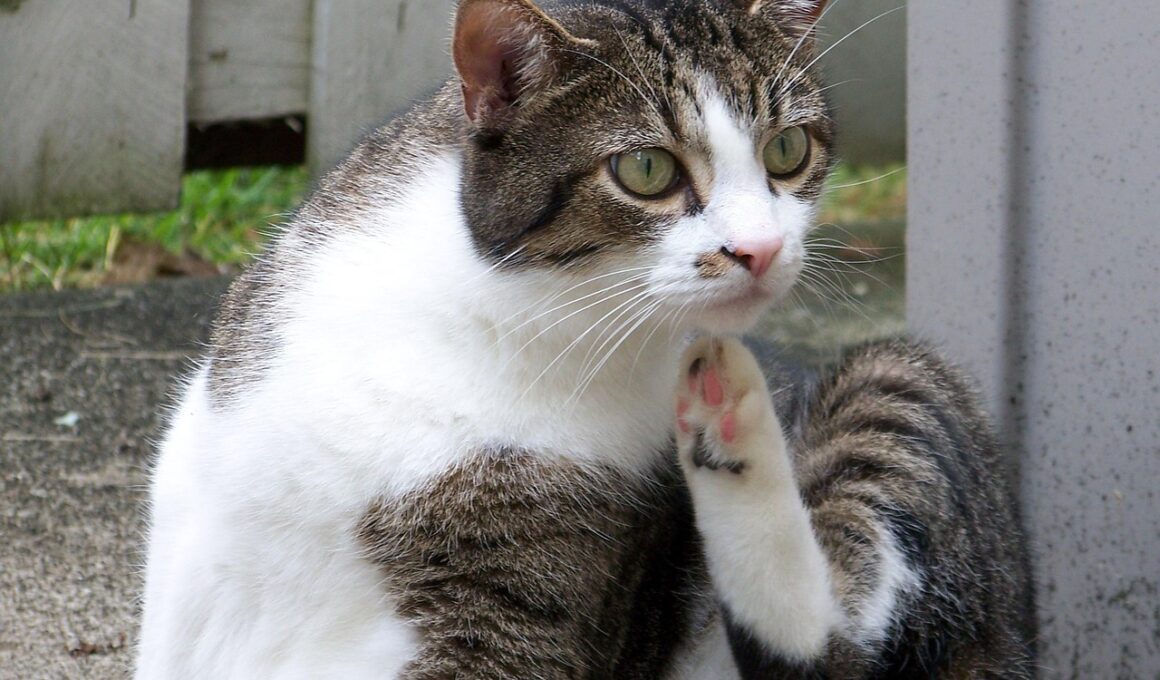Top Effective Ways to Prevent Your Cat from Scratching Furniture
When introducing a new cat into your home, it’s crucial to take preventive steps against furniture scratching. Understanding why cats scratch is the first step. Cats instinctively scratch to sharpen their claws, mark territory, and stretch. Choosing the right scratching post is vital. A scratching post should ideally be tall, stable, and made from materials that cats prefer, like sisal or cardboard. You should place the scratching post in a prominent area where your cat spends a lot of time. Monitor your cat’s behavior and encourage them to use the post. You might have to lead your cat to the post after playtime or reward them with treats when they use it. This reinforcement makes them associate the post with positive experiences. Additionally, limit access to areas where your furniture is most vulnerable. Block off sections of your home during your cat’s scratching phase if necessary. This will help them learn which surfaces are acceptable to scratch. Try using cat furniture spray to attract your pet to the scratching post, enhancing the chances of prolonged use and successful behavioral modification.
Another effective technique is to utilize deterrents that discourage your cat from scratching your furniture. Consider using double-sided tape on areas you want to protect. Cats typically dislike the sticky sensation on their paws, leading them to avoid the area. Additionally, there are commercial sprays designed to deter scratching, which can be applied on your furniture. These sprays often have unpleasant scents that will discourage your cat. You should continuously reinforce your cat’s interaction with scratching posts or pads while ensuring they refrain from furniture scratching. Redirect your cat’s instinct to scratch by rotating scratching surfaces every few weeks to maintain interest. Different textures like carpet, corrugated cardboard, or wood will give your cat options they may prefer. As your cat adjusts to new furniture, observe how they interact with the items in your home. Adapting their environment can significantly impact their behavior. This adjustment process might take time and patience, considering every cat’s individual preferences. Be consistent in your approach and remember that providing alternative options is essential for satisfying their scratching instincts.
Understanding the specific behavior of your cat is another piece of the puzzle regarding prevention. Each cat has unique habits and preferences. Look for specific furniture pieces that attract attention and determine if your cat prefers certain textures over others. Getting to the root cause of your cat’s scratching behavior is beneficial. If your cat’s scratching stems from anxiety or stress, addressing these underlying issues must be a priority. Create a serene environment that promotes relaxation through quiet spaces and the availability of cozy beds. In some cases, offering your cat toys specifically designed to alleviate boredom could keep them engaged. Rotate these toys to maintain their novelty and appeal. Consistency and observation enhance the effectiveness of your overall strategy. If your cat continues to scratch despite your best efforts, consider consulting a veterinarian or a certified animal behaviorist. They can provide additional insight and techniques catered to your cat’s unique personality and needs. Engagement in this process can lead to positive behavioral changes, encouraging a happy and fulfilling relationship between you and your feline friend.
Physical Barriers for Furniture
Incorporating physical barriers to protect your furniture from scratching is another well-known solution. Covering vulnerable furniture with protective materials like slipcovers or throws can significantly reduce damage. These coverings can be easily washed and swapped out, maintaining your decor while keeping your furniture safe. Consider using furniture protectors that can be applied directly to the surfaces. These protectors are often made from high-quality materials designed specifically for preventing scratches. Upholstery that blends well with the furniture would be a smart choice to keep visual aesthetics intact. It’s also worth exploring cat furniture that mimics the design of your home, providing both protection and style. If your cat tends to gravitate towards certain textures, add additional scratching posts around your home. Keep them near any favorite resting areas, reinforcing positive behaviors that prey on your cat’s natural instincts. When they scratch appropriate items, reward them with encouraging words or treats, further promoting the desired behavior. The key components of prevention are patience and adaptability, allowing for gradual changes that positively impact your cat’s behavior.
Creating a well-structured environment that positively impacts your cat’s behavior can have lasting results. Providing sufficient spots for your cat to relax and take in their surroundings can help deter unwanted behavior. A cat tree is a great addition to any household. It offers your feline friend a safe haven to climb, scratch, and survey their territory from above. Additionally, strategically placing cozy cat beds or soft blankets can lure your cat away from furniture. The presence of vertical spaces reduces anxiety and gives your cat the feeling of security. As you enhance their environment, engage your pet in daily playtime to expend energy, further reducing the desire to scratch furniture. Replace scratching at home with interactive sessions using feather wands, laser pointers, or balls. This helps in channeling their natural predatory instincts positively. By investing time into play, you foster a deeper connection with your pet while reducing unacceptable behaviors. Remember to remain patient and understanding throughout the training process, as positive outcomes often come with time and dedication to your pet’s well-being.
Finally, if scratching persists despite your best efforts, sometimes professional help may be necessary. Trained animal behaviorists can analyze your cat’s habits and provide customized recommendations tailored specifically to your situation. They can help identify potential issues that you may overlook. As a result, you will gain valuable insights into your cat’s behavior and lifestyle. This information can help develop a structured plan to improve the situation. Training and behavior modification require dedication and consistency but can yield significant improvements over time. If your cat is scratching due to stress or anxiety, implementing strategies learned from a professional can create a calmer environment overall. It might involve redesigning your living space to be more cat-friendly, ensuring adequate stimulation, and fostering trust and affection. Moreover, some situations may require the use of specific medications if behavioral concerns continue affecting your cat’s quality of life. Always consult with a veterinarian to explore possible options safely. Taking these steps will improve your cat’s overall happiness and keep your furniture in pristine condition.
Maintaining Open Communication
Ultimately, maintaining open communication with your veterinarian and considering professional help can further ensure you are addressing your cat’s needs effectively. Monthly vet visits can help monitor your cat’s health, which can sometimes influence behavior. As pets get older, they may experience changes in energy levels and preferences. Monitoring these transitions is essential for proper behavioral analysis. You should also keep a close watch on your cat’s scratching frequency and behavior patterns. Regularly note any changes and report these observations to your veterinarian, providing accurate information for diagnosing potential issues. Behavioral changes can signal underlying health problems, prompting timely interventions to keep your cat safe. Additionally, fostering a positive and engaged environment through constant companionship and play can reinforce the right behaviors while minimizing undesired habits. Remember, crafting a peaceful home for both you and your feline friend is achievable. With comprehensive preventative measures and a proactive attitude, it’s entirely possible to strike a balance between maintaining your furniture and ensuring your cat’s needs are met. Prioritize patience and consistency in your approach to cat ownership. In the end, your efforts will yield positive results for both you and your beloved pet.
In conclusion, preventing your cat from scratching furniture is about understanding their behavior, providing suitable outlets, and maintaining an environment that meets their needs. Implementing effective strategies, including providing scratching posts, utilizing deterrents, and maintaining a well-structured living space, can make a significant difference. You should also remember that every cat is unique; what works for one may not work for another, requiring tailor-made solutions. As you take the time to observe and adapt to your cat’s preferences, you’ll find more successful tools for positively redirecting their scratching behavior. Regularly engaging your feline friend in playtime and consistently rewarding acceptable scratching can transform unwanted habits over time. Once you commit to understanding your cat’s needs and habits, it’s possible to foster a peaceful coexistence that allows both you and your pet to thrive in harmony. With dedication and love, you can create an environment where your furniture remains safe and your cat feels fulfilled and happy. Taking proactive steps today leads to a happier home for everyone involved, ensuring you nurture a well-behaved and content feline companion.


